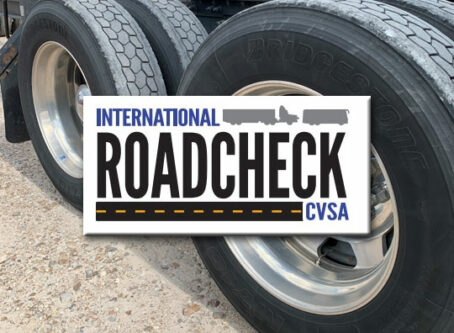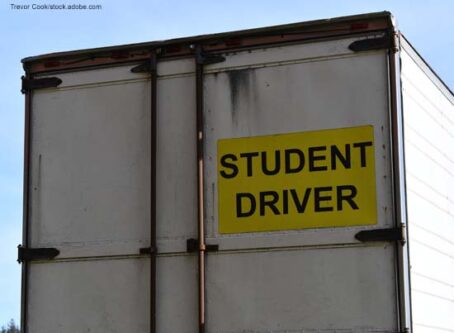California legislature advances side underride guard, ‘intelligent speed’ legislation
A California bill is on the move that would adopt first-in-the-nation rules for the use of speed assistance technology. Included in the pursuit is a mandate to install side underride guards, or lateral protection devices, for trucks traveling in the state.
The Owner-Operator Independent Drivers Association, which represents small-business truck drivers, opposes the legislation.
Side underride guards
The Senate Transportation Committee voted 8-4 to advance an amended bill that has been described as a “head-on attempt” to reduce the number of traffic deaths and injuries on California roadways.
The requirement for side underride guards would apply to every truck, trailer or semitrailer with a gross vehicle weight rating exceeding 10,000 pounds. Sponsored by Sen. Scott Wiener, D-San Francisco, the bill states that affected trucks manufactured, sold or registered in the state must be equipped with side guards on both lateral sides of the vehicle.
The California Highway Patrol would be directed to inspect the side guards of any vehicle involved in a collision impacting the side guards. Additionally, vehicle drivers would be required to conduct regular inspections of side guards for damage and functionality and to replace damaged units as necessary.
‘Passive intelligent speed assistance’
As introduced, SB961 included a requirement for every car, truck and bus manufactured and sold in the state to be equipped with speed governors. The devices limit vehicle speed based on the speed limit for the roadway segment.
The maximum speed threshold permitted by the speed governor would be 10 mph over the posted speed.
Wiener cited an “alarming surge in road deaths” in the state for his pursuit. He cited a 2023 TRIP report that found traffic fatalities in California have increased by 22% from 2019 to 2022. The figure compares to a 19% increase for the U.S. overall.
Additionally, the California Office of Traffic Safety’s 2023 Traffic Safety Report showed that one-third of all traffic fatalities in the state from 2017 to 2021 were speeding-related.
Wiener, however, amended the bill in committee after hearing from critics concerned about using technology to prevent drivers from exceeding the posted speed by more than 10 mph for any reason.
The revised version would require vehicles manufactured or sold in the state to be equipped with “passive intelligent speed assistance.” Specifically, the warning system would provide audio and video signals to alert drivers when they are traveling at least 5 mph over the posted speed.
The system would be phased in over the next eight years. In 2029, half of new passenger vehicles, commercial vehicles and buses manufactured or sold in the state would be required to have the warning system. All new vehicles would be required to have the warning system by 2032.
The rule would not apply to earlier model years or vehicles sold in other states.
A bill analysis for SB961 points out that establishing a California-specific production line for vehicles would be “extremely costly and impractical.”
“Auto manufacturers are much more likely to simply overhaul the production of all American vehicles to comply with this bill,” the analysis reads. “In effect, the author is attempting to leverage the purchasing power of the state to create a new standard for nationwide industry.”
The National Transportation Safety Board was on hand at the hearing in support of SB961.
‘Flawed’ legislation
OOIDA President Todd Spencer expressed that the bill, as introduced, missed the mark.
“Unproven technology or well-intentioned regulations should not obstruct the ability to make changes in speed that are sometimes necessary to drive safely, such as switching lanes or to move away from certain unsafe situations,” he said.
Spencer added that instead, an increased police presence could monitor speeders.
Sen. Roger Niello, R-Fair Oaks, made the same point.
“Every time we entertain these proposals to try to control the crazy driving that is going on … I’ve yet to see a proposal that would increase enforcement,” Niello told the committee. “We need to stop people more for this driving behavior.”
Spencer also noted that driver training for all motor vehicles would go farther in improving highway safety.
Doug Morris, OOIDA director of state government affairs, focused his concern on the side underride guard provision.
“Any legislation that would require side underride guards on semitrailers is flawed legislation from the start,” Morris said.
He added that the Association has shown side underride guards “are impractical, provide little to no safety benefit and cause major issues at many loading docks, railroad crossings as well as other traffic impediments.” In addition, Morris said the costs outweigh the benefits.
The California Trucking Association is also opposed to the pursuit. The group encouraged Wiener not to compete with and instead to support the National Highway Traffic Safety Administration’s ongoing research and rulemaking on the issues. LL









